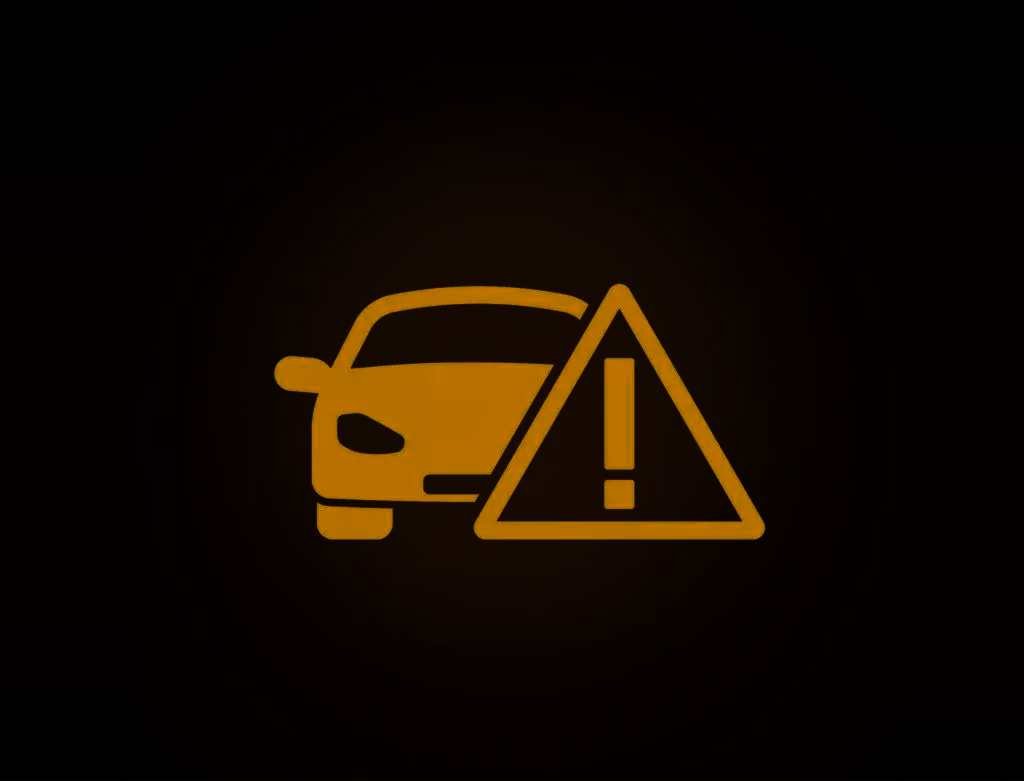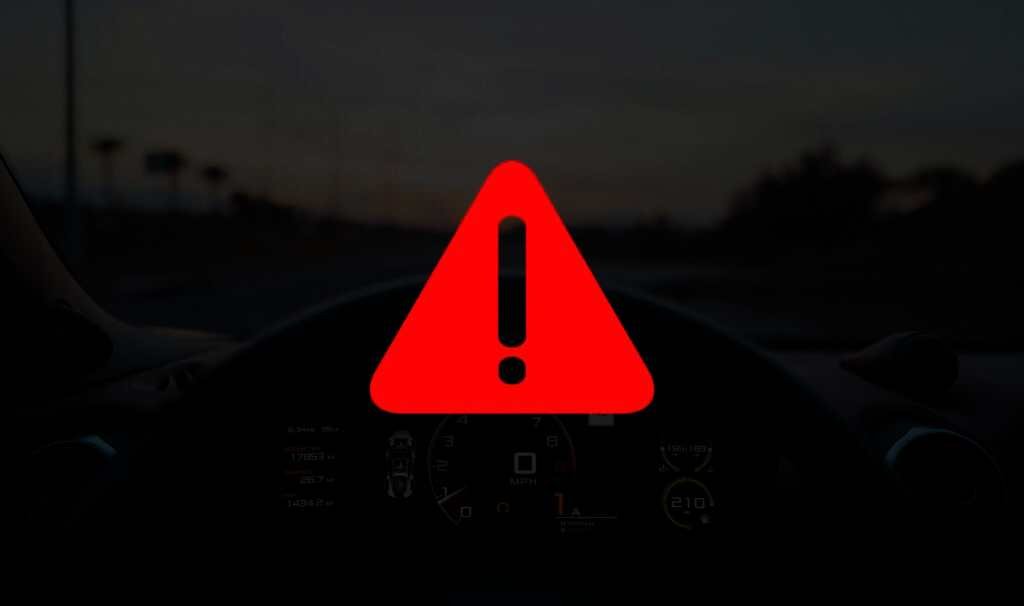What Does The Master Warning Light On The Dash Meaning? Fixes
In the journey of life, vehicle maintenance often mirrors unexpected challenges, much like those warning lights on the dashboard that we strive to avoid. The appearance of a warning light can signify a problem, urging us to take necessary measures.
Of these, the master warning light is particularly noteworthy for its common occurrence, flashing as a beacon of attention. It’s equally important to know the meaning behind this illumination, as it could indicate multiple reasons ranging from minor issues to critical alerts.
Drawing from personal experience and expertise, I’ve put together a detailed guide aimed at explaining the causes behind this light and offering methods to turn it off. Recognizing the significance of these indicators is crucial in ensuring the safety and longevity of your vehicle because addressing them promptly can avoid further complications.

What Is the Meaning of the Master Light?
When the master warning light, a small triangle symbol with an exclamation mark in the middle, illuminates on your dash, it’s a universal call to action, differing from other warning lights and indicators.
This light, which can appear in yellow or red color, doesn’t denote a specific risk but rather signals that one or more problems, either simple or complex, may be present. Unlike warning lights related to a single car component, the master warning light isn’t risk-specific and serves as a catch-all alert for vehicle issues.
The meaning behind this light is broad, urging drivers to “Hey, take a look at your dashboard; there might be something wrong with your vehicle!” It’s designed to signify a call for attention to vehicle health, without pinpointing the exact problem, which could be influenced by a wide range of factors such as the car you own, its manufacturing year, and its model.
When this light turns on, often accompanied by another light, it indicates that a closer inspection is needed to figure out the issue at hand and move toward the solution phase.
This approach, discussed above, ensures that drivers are alerted to look around for other pop-ups and note them, making it easier to expect and diagnose the problem effectively.

What Are the Causes of Master Warning Light Popping Up On the Dash?
After exploring what the master warning light signifies, let’s delve into why it might show up on your vehicle’s dashboard.
Out of Battery
One of the primary reasons the master warning light might illuminate your car’s dashboard is when your car is out of battery. This scenario is common not just in electric cars that require being charged to keep moving, but also in manual and oil-based cars.
The battery is vital for the vehicle’s ability to function correctly, and neglecting the charging of your car’s battery for a long time could lead to this warning.
Whether it’s due to the car sitting unused for an extended period or simply the age of the battery reaching its end, the charge warning light might start flashing alongside the master light, signaling an urgent need for attention.
Anti-Lock Braking System
A critical alert that can trigger the appearance of the master warning light on your car’s dashboard involves a problem with the Anti-Lock Braking System (ABS). When this system encounters an issue, your car may still have brakes that function, but without the crucial anti-lock assistance designed to prevent wheel lock-up during an emergency stop.
This lack of assistance can significantly impact your vehicle’s safety and handling. Often, this scenario is accompanied by the ABS warning light illuminating alongside the master warning light, providing a clear signal that the anti-lock braking system requires immediate attention.
Low Engine Oil Pressure
Neglecting to check the engine oil level for a long time can be a direct cause for the master warning light to illuminate on your dashboard. A low engine oil level is not sufficient to keep your car moving smoothly, eventually leading to the flashing of the engine oil pressure light on the car’s dashboard alongside the master warning.
This is a tell-tale sign that your vehicle urgently needs maintenance to prevent any potential damage to the engine, underscoring the importance of regular checks and top-ups of engine oil to ensure the reliability of your car.
Low Brake Fluid Level
A Low Brake Fluid Level is a critical condition that necessitates keeping a vigilant eye on your car’s brake fluid level to ensure it is always at an optimum. Failure to maintain this can lead to your vehicle not going smoothly, or worse, causing significant damage to the brake system.
Such a scenario might even necessitate the costly measure of having to replace the brakes entirely. The master warning light on your dashboard serves as an early indicator, alerting you to the potential risk before it escalates. It’s a reminder that, like the engine oil level and pressure, the brake fluid’s adequacy is pivotal for the safe operation of your car, underscoring the importance of regular maintenance checks to avert any unforeseen complications on the road.
The Master Warning Light on the Dash serves as a crucial indicator, encompassing various alerts that require your attention. From engine issues to low fluid levels, decoding all the warnings including Chrysler Pacifica auto start stop warning light and Kenworth dash warning lights ensures safe and efficient driving.”
Loose Gas Cap
A seemingly minor oversight like a Loose Gas Cap can trigger the master warning light to start flashing on your dashboard. It’s a reminder that every component, no matter how small, plays a significant role in the overall functionality of your vehicle.
Whether it’s after putting gas in at the last gas station and not having tightened the gas cap properly, this small action can set off warnings. It serves as a caution that even the simplest tasks, such as ensuring the gas cap is secure, are essential for maintaining the integrity of your vehicle’s systems.
Low Pressure In Tire
Low Pressure In Tire is a significant cause for the master warning light popping up on your car’s dashboard. It’s a clear indicator that either all tires or one has low pressure, which could lead to reduced fuel efficiency, poor handling, and even the risk of a flat tire.
This alert serves as a crucial warning sign to check and adjust the tire pressure to the recommended levels. It emphasizes the importance of regular tire pressure checks as part of your vehicle’s maintenance routine.
Power Steering
Issues with the Power Steering system can lead to the appearance of the master warning light on your car’s dashboard. If you’ve noticed that turning your vehicle has become more challenging or if the power steering warning light illuminates, it’s a clear indication that your car’s power steering system may require attention.
This could be due to a variety of reasons, from fluid leaks to pump failures, but regardless of the cause, it significantly affects your ability to steer the car smoothly and safely.
Open Door
An Open Door not being closed properly before getting into the car can lead to the appearance of the master warning light on your dashboard. This seemingly minor oversight highlights how crucial properly closing the door of your vehicle is, not just for the car’s security but also for the safety of its passengers.
Modern vehicles are equipped with sensors that immediately notice if doors are not closed properly, even if it’s just a slight problem. These sensors are designed to notify you by turning on the master warning light, ensuring you’re aware of the issue before you begin driving.
Seat Belt Warning
One of the most common reasons you might see the master warning light pop up on your dashboard is the Seat Belt Warning. This warning light appears when you or your passengers have not fastened your seatbelt upon starting the car. It’s a built-in reminder that ensures everyone in the vehicle is secured before driving.
The seat belt warning light on the car’s dashboard is not just a legal requirement but a critical safety measure designed to protect you and your passengers. Ignoring this alert can compromise the safety features of your vehicle, making it essential to buckle up as soon as you get into the car.
Headlights
Forgetting to turn off the car’s headlights after leaving the car can lead to an insufficient charge in the car’s battery, which may trigger the master warning light to turn on. This is because the headlights remaining on can take a significant toll on the car’s battery, especially if left on for an extended period.
Many modern vehicles are equipped with sensors that detect when the headlights are left on after the engine is turned off. These sensors are designed to notify you by turning on the master warning light, prompting you to turn them off and thus prevent draining the battery.
High Engine Temperature
Facing a High Engine Temperature is a critical signal that one of the most crucial components of your car is under threat. This situation points to a significant problem with the engine—the heart of your vehicle’s ability to keep moving. Ignoring this warning can lead to serious consequences, as high engine temperature is often a precursor to serious hazards.
Fortunately, modern vehicles are equipped with sensors designed to detect an increase in the engine’s temperature. These sensors report back to the vehicle’s computer, prompting it to turn on the master warning light and the check engine light to let you know that immediate attention is required.
Low Maintenance
Low Maintenance is one of the leading causes for the master warning light to start flashing on your car’s dashboard. It serves as a nudge to take your car to a professional for maintenance before it’s too late.
Ignoring this warning could lead to more significant issues down the line, as regular check-ups are essential to ensure your vehicle runs smoothly and efficiently. When you see the master warning light appear, along with the maintenance light on the dashboard, it’s a clear warning not to delay.
Also Read: Why is my check engine and Trac off light on
No Gas
Finding yourself with No Gas is a scenario no driver wants to face, especially when it leads to the master warning light turning on in your car. This situation signals that your vehicle is almost out of gas, potentially leaving you stuck in the middle of the road.
Modern vehicles come equipped with sensors that can detect when the fuel level is critically low and send a signal to the car’s computer. This, in turn, activates the warning light, notifying you before it’s too late to avoid an inconvenient or even hazardous situation.
Parking Brake
Driving with the Parking Brake engaged is a common oversight that triggers the master warning light to become illuminated on your car’s dashboard. This alert serves as a crucial reminder to check your car’s brakes before you start driving.
While it may not seem as dangerous as other issues like the engine heating up or a door remaining open, leaving the parking brake on while driving can still cause damage to your car’s braking system. This simple check can save you from unnecessary wear and tear on your vehicle and maintain optimal safety on the road.

How to Turn Off the Master Warning Light?
When the master warning light starts illuminating your car’s dashboard for different reasons, it signals various measures to tackle the problem.
There’s a list of actions to turn off the light, each addressing specific causes behind why it turned on.
Locate the Other Light
When the master warning light pops up on your dashboard, it’s a signal to locate the other warning light that’s also illuminating. Often, this could be the NO GAS light, indicating your car is nearly out of gas. This situation means a quick trip to the gas station is needed to get your gas tank filled. Once done, both the master warning light and the NO GAS warning light will turn off, leaving you stress-free and back on the road. It’s like a mini adventure, ensuring your car keeps running smoothly without any hiccups.
Turn Off the Ignition
A simple yet effective method to address the master warning light on your dashboard is by turning off the car’s ignition. This approach can often fix the issue by cutting the whole power supply to your vehicle, thus resetting the system. After waiting a few moments, turning on the ignition again can be the solution that works in most cases to switch off the master warning light. It’s a straightforward troubleshooting step that requires no technical knowledge and can save you a trip to the mechanic for minor issues that are simply rectified by a system reset.
Use the Car’s Manual
When the master warning light appears on your dashboard, a practical first step is to check out the user manual of your car. This resource is invaluable for finding out the actual reason behind the appearance of the light. Manufacturers provide detailed explanations for each symbol and warning light in the manual, allowing you to figure out the reason easily. Once identified, the manual often provides straightforward instructions on how to turn off the light, effectively resolving the issue without much hassle. This approach saves time and empowers you as a vehicle owner, enhancing your understanding of your car’s operational indicators.
Seek Professional Help
When none of the above methods help to turn off the master warning light on your vehicle, you’re left with no other option but to seek professional help. But don’t worry; this step is often the most effective way to address the issue. Taking your vehicle to a mechanic to get checked is a straightforward approach that can save you time and ensure your car is in good hands.
Professionals have the tools and expertise to find out the problem right away, offering peace of mind that the root cause will be identified and resolved. This approach not only ensures the longevity and safety of your vehicle but also helps in maintaining its performance and reliability on the road.
FAQs
Is It Safe to Drive With the Master Warning Light On?
Driving with the Master Warning Light on is not advisable as it indicates a potential issue with your vehicle. It could be something minor or a serious problem that requires immediate attention. To ensure safety and prevent further damage to the vehicle, it’s best to address the issue as soon as possible.
What Is the Meaning of Blinking Master Warning Light?
A blinking Master Warning Light typically indicates a more urgent issue than a steadily illuminated light. It suggests that immediate attention is needed to address a potentially serious problem with the vehicle’s systems or components. It’s important to consult the vehicle’s manual or seek professional help promptly.
When to Worry About Dashboard Lights?
You should worry about dashboard lights if they illuminate or blink unexpectedly, especially red or flashing, as these indicate immediate or serious issues. Pay attention to warning lights for the engine, temperature, oil pressure, brake system, and battery, and consult your vehicle’s manual or a professional for any lights that remain on or flash.
What is the stop light on the dash of a Renault Master?
The stop light on the dash of a Renault Master is a warning light that typically indicates a serious issue requiring immediate attention. It could signal problems related to the engine, braking system, cooling system, or oil pressure. It’s important to stop driving and check the vehicle’s manual or seek professional assistance as soon as this light illuminates.
Which Warning Light Is the Most Serious One?
The most serious warning light is typically the engine temperature warning light (indicating the engine is overheating) or the oil pressure warning light (indicating low oil pressure). Both signify immediate attention is needed to prevent potential severe damage to the vehicle’s engine.

Final Word
In conclusion, understanding the significance of dashboard warning lights, especially the master warning light, is crucial for maintaining vehicle safety and performance. Prompt attention to these lights, whether they are blinking or steadily illuminated, can prevent minor issues from escalating into serious problems. Knowing when to address these warnings yourself and when to seek professional help is key to ensuring your vehicle remains in optimal condition and continues to operate safely on the road.





